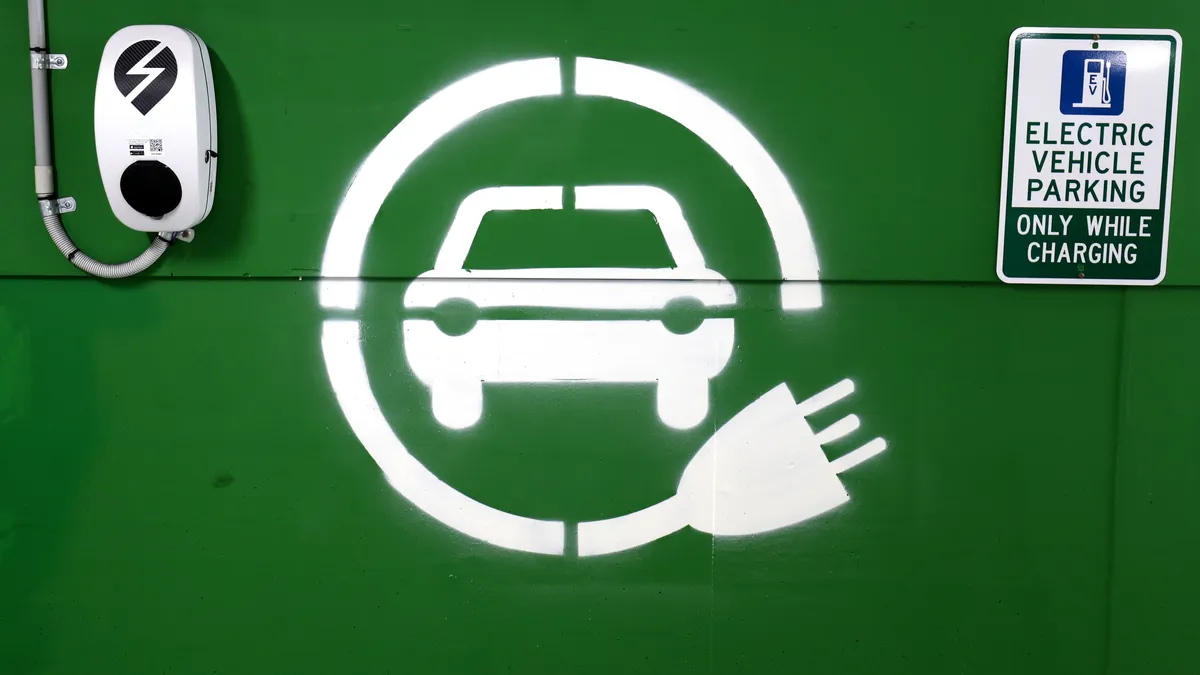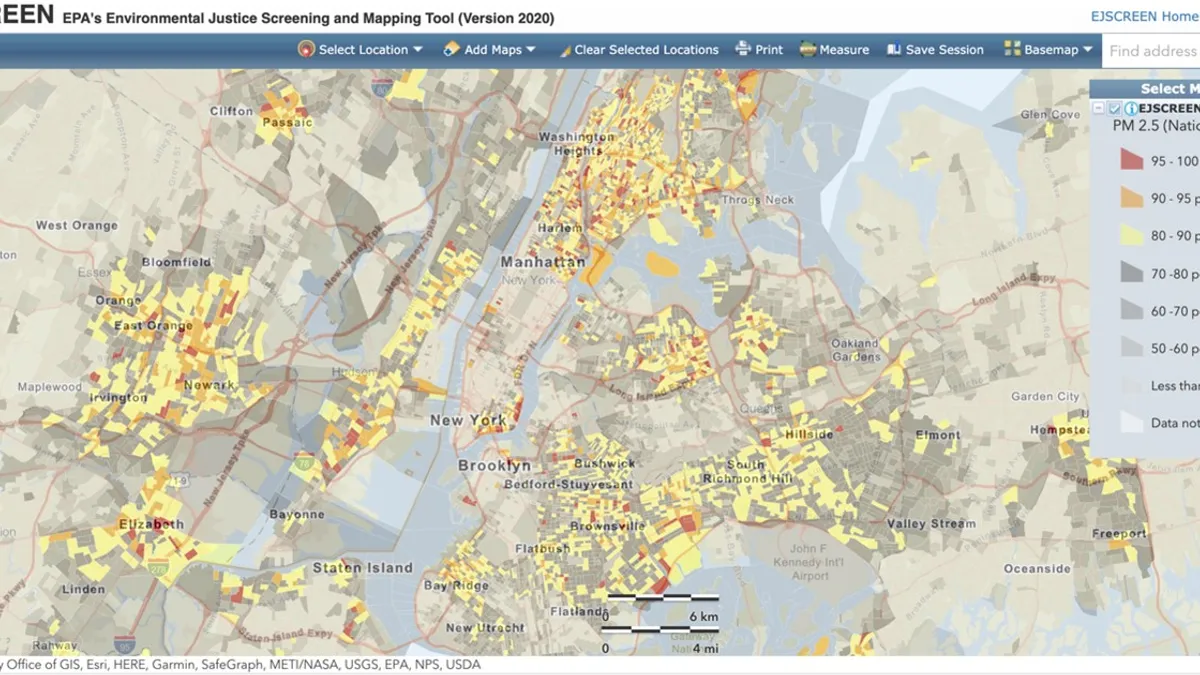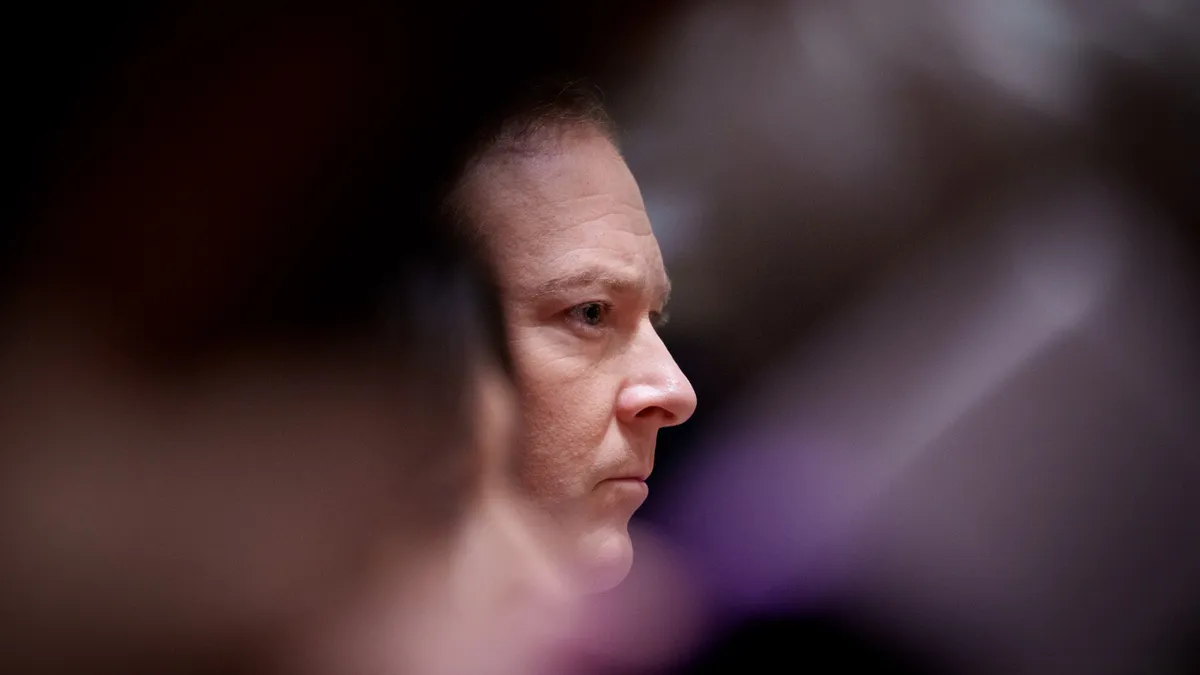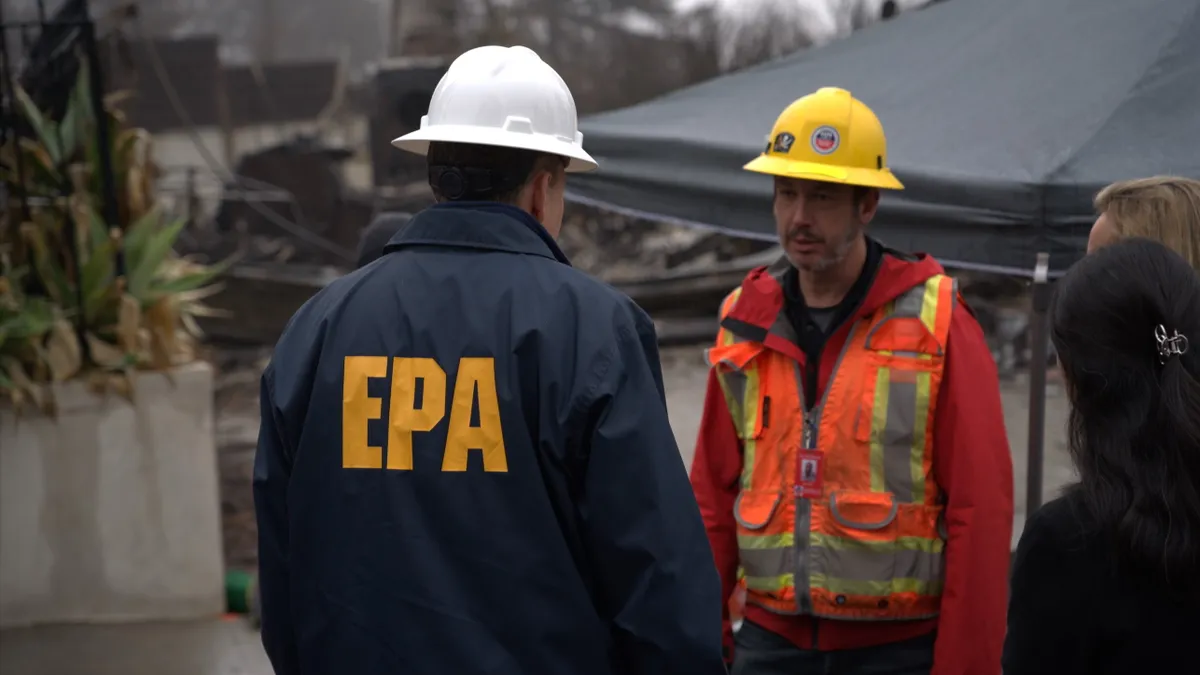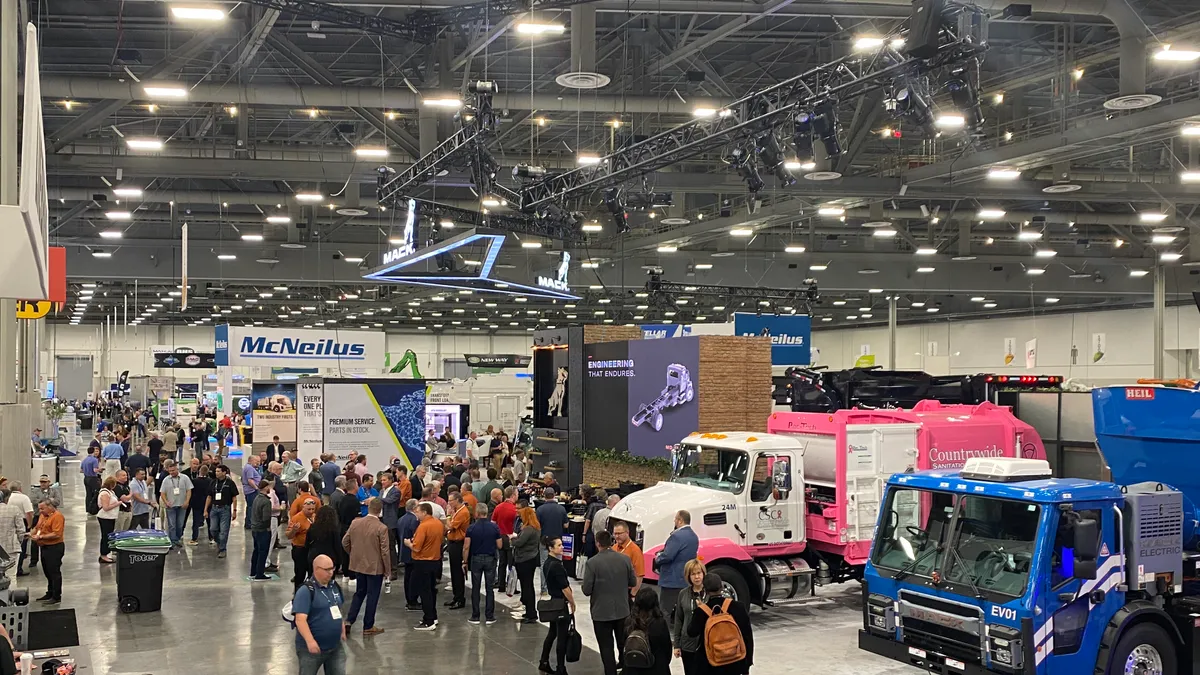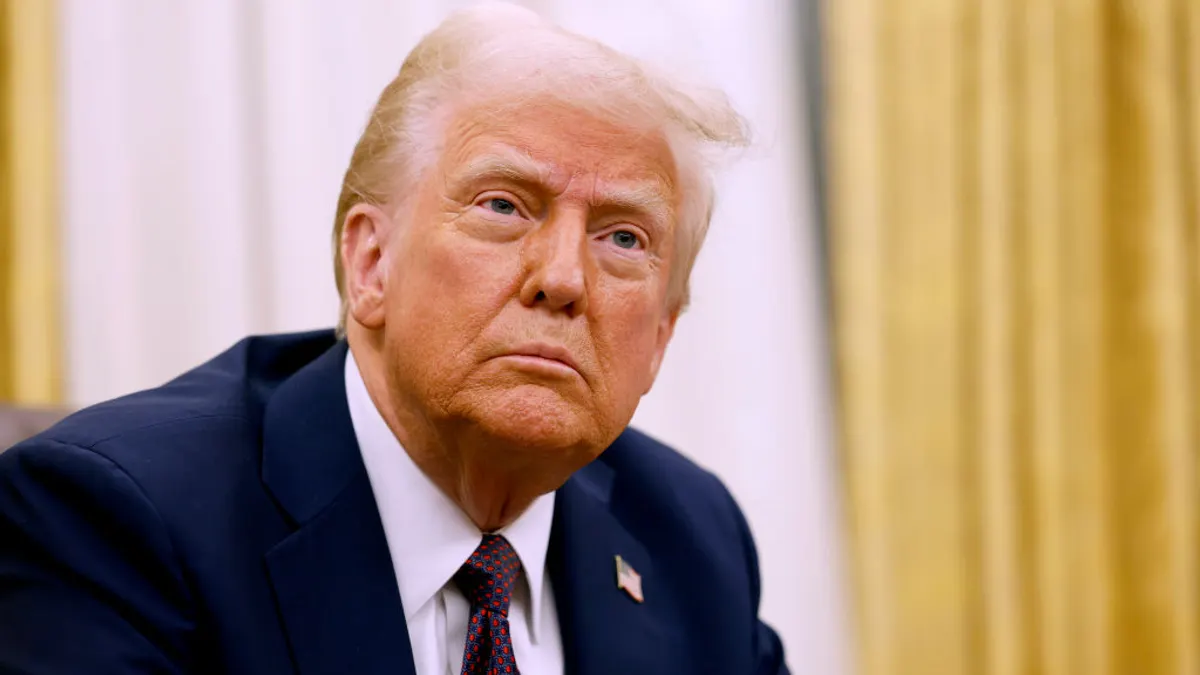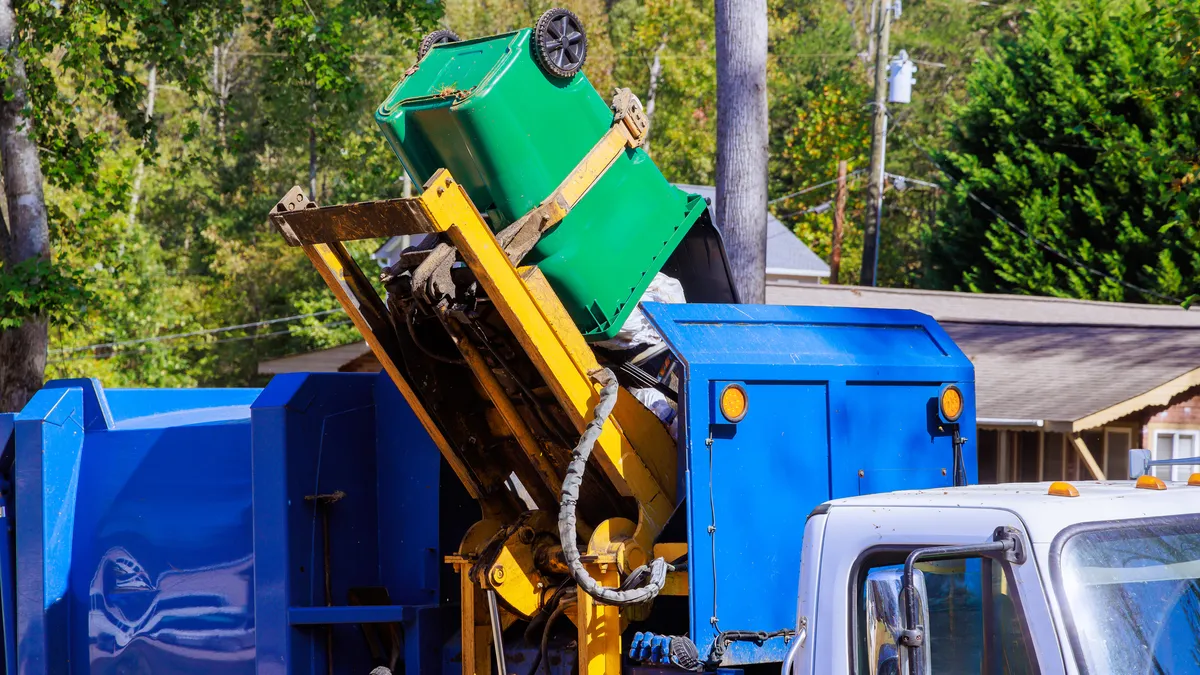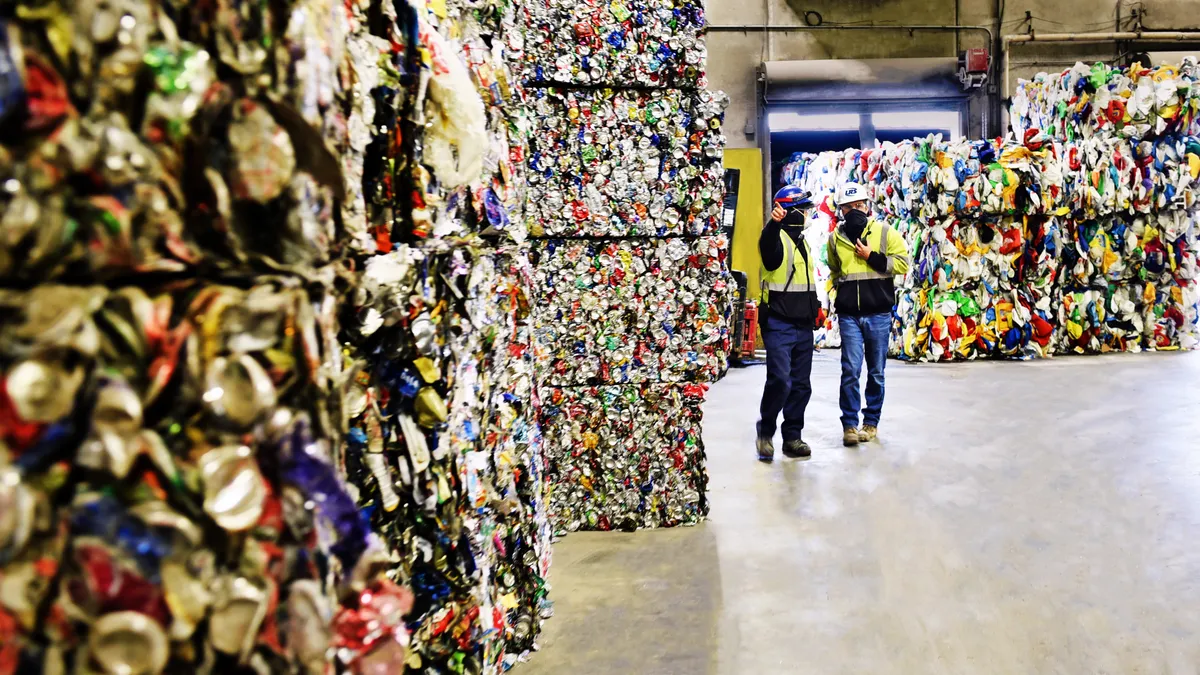The lithium-ion battery industry is staring down a huge increase in demand, spurred by explosive growth in electric vehicle manufacturing. In the United States, where just 1% of the raw and component materials for EV batteries are currently produced, recyclers believe they can meet the moment.
Over the course of just one week in September, four battery recyclers with U.S. operations announced collectively raising more than $255 million in new funding to expand their operations. American Battery Technology Company raised $39.1 million to support a new Nevada facility. Redwood Materials announced a $50 million investment from Ford to integrate battery recycling into the automaker's supply chain. Li-Cycle received a $100 million investment from Koch Strategic Platforms to build out new recycling centers in North America and elsewhere. Battery Resourcers raised $70 million in funding to expand operations to Europe.
The money comes as automakers and battery cell manufacturers prepare to meet pledges — hastened by state and federal requirements — to dramatically scale up their production of electric vehicles over the next decade.
Mathy Stanislaus, interim director of the Global Battery Alliance, said global recycling would need to grow by 25 times its current capacity in order to meet demand for lithium-ion battery materials. Capturing the batteries coming out of aging and defective electric vehicles can help meet that capacity.
“The large volumes that are going to be coming off of EVs are still to come,” said Stanislaus, a former U.S. EPA assistant administrator. “We have a rare opportunity to really plan for that.”
Scaling rapidly
Recyclers of spent batteries say they can implement systems now to capture and reintroduce the minerals such as lithium, cobalt and nickel that are needed for manufacturing into the supply chain. And it’s clear the industry is ready for growth: from April to September of this year, the forecasted amount of total lithium-ion batteries that will be available for recycling in North America by 2025 went up 65%, according to Benchmark Mineral Intelligence.
Experts at Benchmark and elsewhere anticipate that beginning in 2025, 398,000 tons of batteries will begin to age out of EV applications and will need to be reused, recycled or else become waste — four times the number of batteries aging out in 2018. Recyclers are now racing to ramp up capacity before the wave begins to crest.
The American Battery Technology Company (ABTC) is one such recycler ramping up capacity. The company has earned funding from industry heavyweights like BASF and government agencies such as the U.S. Department of Energy (DOE) by focusing on disassembling spent batteries in an efficient recycling process.
CEO Ryan Melsert said the discrepancy between critical mineral mining and refining versus cell and vehicle manufacturing capability in the United States is likely to get worse before it gets better. The nation's industrial base for mining and refining has become anemic as those industries have shifted abroad. In comparison, large automakers like Ford and GM continue to attract talent and are well-positioned to aggressively expand into the electric vehicle market.
"We have some of the best vehicle manufacturing engineers in the world and large amounts of the cell manufacturing," Melsert said. "But when it comes to mining and material processing, over the past few decades, the U.S. has just outsourced a lot of that work."
That may change soon. In the bipartisan infrastructure bill working its way through Congress, a recent draft included over $6 billion in new funding for the battery manufacturing industry. Those funds are largely focused on growing the critical mineral sourcing Melsert said needs a boost.
Roughly half of that money could go toward recycling, a huge infusion into the nascent industry.
Wilson Ma, vice president of corporate development at Li-Cycle, said the Canada-based recycler was able enter the recycling market early, in 2016, partially by recycling the scrap that the rapidly expanding cell manufacturing sector is producing. That steady source of material has allowed Li-Cycle to expand and prepare for new feedstock sources today.
"A lot of people really thought it was going to be a problem 10 years from now, so i.e. at the true end of life for the vehicle," Ma said. "In fact, what we've learned so far is that it's not just the end of life batteries that provide the volumes for us to recycle, it's actually the manufacturer scrap that comes off of these cell production plants that can also produce substantial volume."
Li-Cycle currently processes 10,000 metric tons of lithium-ion batteries in North America, with plans to bring online an additional 20,000 metric tons of U.S. capacity by mid-2022.
Ma said that it’s “fairly early stages” for the battery recycling industry in North America, but he’s encouraged by government interest in supporting recyclers.
Several recycling executives said if the infrastructure provisions pass as outlined they would certainly take a hard look at accessing some of that additional funding. But no one is waiting for Congress to act before planning aggressive expansion.
"There's huge growth in demand domestically, and there's a shortage of metals period, let alone materials with low environmental impact," Melsert said. "Our biggest hurdle right now is just that we're scaling up as quickly as we can."
Applying lessons learned
The industry is familiar with reaching toward a closed-loop system for recycling batteries — today, 99% of lead-acid batteries in the United States are recycled. Yet only about 5% of lithium-ion batteries are currently recycled, according to the DOE.
Stanislaus said that relatively closed loop was achieved only after manufacturers realized the need for a sustainable source of lead outweighed the need to create proprietary battery structures.
"Early on... it hindered the recycling market because all these unique designs resulted in significant cost and difficulty to recover the lead," he said said. "So I think that that's a good kind of learning opportunity to look at the benefit of a common approach."
The Global Battery Alliance includes both battery manufacturers and public entities, and Stanislaus and others have expressed optimism that the industry can work to set some common standards to promote reuse or recycling.
Already, battery manufacturers motivated by ESG goals or resource scarcity are recognizing the inherent value in recovering the minerals used in lithium-ion batteries. The vagaries of critical mineral production in particular have led to repeated concerns of shortages in the elements most needed to produce lithium-ion batteries.
Originally, manufacturers most feared a lithium shortage. Early reports indicated there may not be enough accessible reserves to meet demand, though research over the last few years has found that world lithium reserves will likely be enough to supply demand for EV batteries through at least 2050.
Cobalt also remains a concern. The U.S. Geological Survey reported that 70% of the world’s cobalt supply came from the Democratic Republic of Congo in 2019, despite widespread reports of child labor in the country’s mining industry. Those concerns have led manufacturers to shift their battery chemistries to include more nickel instead of cobalt in some cases.
But just last week, a report from Rystad Energy also found that nickel could be in short supply as soon as 2026. The report may lead to yet another shift, this time toward iron phosphate-based lithium batteries, industry leaders said.
Rather than navigate the geopolitical uncertainty and ethical issues that arise from these mined minerals, manufacturers are taking an interest in recycling as a means to provide certainty and bolster capacity to lithium-ion battery manufacturing.
Stanislaus said the explosion of growth in electric vehicles and lithium-ion batteries is different from other industries that have grown in recent years, like IT. Instead of purely market-driven innovation, the focus of public policy on decarbonizing the transportation sector has created a high-pressure environment to deliver electric vehicles on a brisk timeline.
As a result, the Global Battery Alliance — which Stanislaus has been involved with since its founding through the World Economic Forum in 2017 — has convened working groups involving public and private partners to design batteries in a way that they can be recycled or reused much more easily, rather than become waste.
"I think all the money that's coming into the market really means that a [recycling] company is going to experiment," Stanislaus said. "That's all fine and good, but unless they're all converging at least within some common approach that matches batteries being manufactured today, there's going to be a misalignment."
Extending use
The electric vehicle boom over the next decade is expected to bring a revolution to the lithium-ion battery industry, but the chemistry has seen wide use in more niche applications for almost two decades. Current recycling industry players have found creative ways to establish their market position.
Li-Cycle staked an early claim on the industry by building the largest recycling plant devoted to lithium-ion batteries in the United States in Rochester, New York, which opened this year. Ma said relying on scrap, which some cell manufacturers currently produce at a rate as high as 30% of overall production, provides a hefty amount of feedstock for the company's active facilities.
He expects that number to fall toward 5% as technology and processes improve. Yet even as that scrap rate falls, the sheer volume of cell manufacturing set to come online by 2025 alone — almost four times the present capacity, according to the DOE — means there are steady profits to be made in the lithium-ion battery industry by recycling scrap at the manufacturing site.
Shane Thompson, president of Retriev Technologies, said he has been attending conferences about lithium-ion batteries for over 20 years. His company has carved out a niche for itself as a jack-of-all-trades, taking in smaller lithium-ion batteries from consumer electronics as well as lead-acid batteries and other types in its smelting process.
Thompson said electric vehicle batteries bring a set of unique challenges: the packs themselves, for one, are so large that Retriev had to grow the size of its equipment in a British Columbia plant to handle the scrap.
But his company, which recently combined with The Heritage Group and Kinsbursky Brothers International, is investing heavily in technology that can test the capacity of batteries before they’re broken down, potentially opening them up for use in energy grid capacity or other applications.
“Renewable energy's limiting factor is the intermittent nature in which it's generated. So if you can pair that with an affordable energy storage option, you can now diversify. It makes the renewable energy a lot more attractive,” Thompson said.
Lithium-ion batteries are taken out of electric vehicles when they’ve lost only about a quarter of their capacity. That leaves a lot of useful energy still within the battery that recyclers believe they can and should harness for other uses.
Many recyclers are now actively engaging with automakers to guide their lithium-ion batteries into a more recyclable and reusable form. That’s a sea change in the way the industry is doing business, especially compared to the lead-acid batteries of old, and a positive sign for a new approach to waste.
“Where historically this conversation about recycling was only in the environmental and sustainability folks' offices, now it's kind of moving into the supply chain and procurement offices. So where are our materials going? How do we get any of our materials back?” Thompson said. “I think that's a focus."



